12. References#
Ricardo Barandela, José Salvador Sánchez, V Garca, and Edgar Rangel. Strategies for learning in class imbalance problems. Pattern Recognition, 36(3):849–851, 2003.
Gustavo EAPA Batista, Ana LC Bazzan, and Maria Carolina Monard. Balancing training data for automated annotation of keywords: a case study. In WOB, 10–18. 2003.
Gustavo EAPA Batista, Ronaldo C Prati, and Maria Carolina Monard. A study of the behavior of several methods for balancing machine learning training data. ACM SIGKDD explorations newsletter, 6(1):20–29, 2004.
Nitesh V Chawla, Kevin W Bowyer, Lawrence O Hall, and W Philip Kegelmeyer. Smote: synthetic minority over-sampling technique. Journal of artificial intelligence research, 16:321–357, 2002.
Chao Chen, Andy Liaw, Leo Breiman, and others. Using random forest to learn imbalanced data. University of California, Berkeley, 110(1-12):24, 2004.
A. Esuli, S. Baccianella, and F. Sebastiani. Evaluation measures for ordinal regression. Intelligent Systems Design and Applications, International Conference on, 1:283–287, dec 2009. URL: https://doi.ieeecomputersociety.org/10.1109/ISDA.2009.230, doi:10.1109/ISDA.2009.230.
Vicente García, José Salvador Sánchez, and Ramón Alberto Mollineda. On the effectiveness of preprocessing methods when dealing with different levels of class imbalance. Knowledge-Based Systems, 25(1):13–21, 2012.
Hui Han, Wen-Yuan Wang, and Bing-Huan Mao. Borderline-smote: a new over-sampling method in imbalanced data sets learning. In International conference on intelligent computing, 878–887. Springer, 2005.
Peter Hart. The condensed nearest neighbor rule (corresp.). IEEE transactions on information theory, 14(3):515–516, 1968.
Haibo He, Yang Bai, Edwardo A Garcia, and Shutao Li. Adasyn: adaptive synthetic sampling approach for imbalanced learning. In 2008 IEEE International Joint Conference on Neural Networks (IEEE World Congress on Computational Intelligence), 1322–1328. IEEE, 2008.
Shohei Hido, Hisashi Kashima, and Yutaka Takahashi. Roughly balanced bagging for imbalanced data. Statistical Analysis and Data Mining: The ASA Data Science Journal, 2(5-6):412–426, 2009.
Miroslav Kubat, Stan Matwin, and others. Addressing the curse of imbalanced training sets: one-sided selection. In Icml, volume 97, 179–186. Nashville, USA, 1997.
Felix Last, Georgios Douzas, and Fernando Bacao. Oversampling for imbalanced learning based on k-means and smote. arXiv preprint arXiv:1711.00837, 2017.
Jorma Laurikkala. Improving identification of difficult small classes by balancing class distribution. In Conference on Artificial Intelligence in Medicine in Europe, 63–66. Springer, 2001.
Xu-Ying Liu, Jianxin Wu, and Zhi-Hua Zhou. Exploratory undersampling for class-imbalance learning. IEEE Transactions on Systems, Man, and Cybernetics, Part B (Cybernetics), 39(2):539–550, 2008.
Richard Maclin and David Opitz. An empirical evaluation of bagging and boosting. AAAI/IAAI, 1997:546–551, 1997.
Inderjeet Mani and I Zhang. Knn approach to unbalanced data distributions: a case study involving information extraction. In Proceedings of workshop on learning from imbalanced datasets, volume 126. 2003.
Giovanna Menardi and Nicola Torelli. Training and assessing classification rules with imbalanced data. Data Mining and Knowledge Discovery, 28:92–122, 2014. URL: https://doi.org/10.1007/s10618-012-0295-5, doi:10.1007/s10618-012-0295-5.
Hien M Nguyen, Eric W Cooper, and Katsuari Kamei. Borderline over-sampling for imbalanced data classification. In Proceedings: Fifth International Workshop on Computational Intelligence & Applications, volume 2009, 24–29. IEEE SMC Hiroshima Chapter, 2009.
Chris Seiffert, Taghi M Khoshgoftaar, Jason Van Hulse, and Amri Napolitano. Rusboost: a hybrid approach to alleviating class imbalance. IEEE Transactions on Systems, Man, and Cybernetics-Part A: Systems and Humans, 40(1):185–197, 2009.
Michael R Smith, Tony Martinez, and Christophe Giraud-Carrier. An instance level analysis of data complexity. Machine learning, 95(2):225–256, 2014.
Craig Stanfill and David Waltz. Toward memory-based reasoning. Communications of the ACM, 29(12):1213–1228, 1986.
Ivan Tomek. An experiment with the edited nearest-neighbor rule. IEEE Transactions on systems, Man, and Cybernetics, 6(6):448–452, 1976.
Ivan Tomek. Two modifications of cnn. IEEE Trans. Systems, Man and Cybernetics, 6:769–772, 1976.
Shuo Wang and Xin Yao. Diversity analysis on imbalanced data sets by using ensemble models. In 2009 IEEE symposium on computational intelligence and data mining, 324–331. IEEE, 2009.
D Randall Wilson and Tony R Martinez. Improved heterogeneous distance functions. Journal of artificial intelligence research, 6:1–34, 1997.
Dennis L Wilson. Asymptotic properties of nearest neighbor rules using edited data. IEEE Transactions on Systems, Man, and Cybernetics, pages 408–421, 1972.

